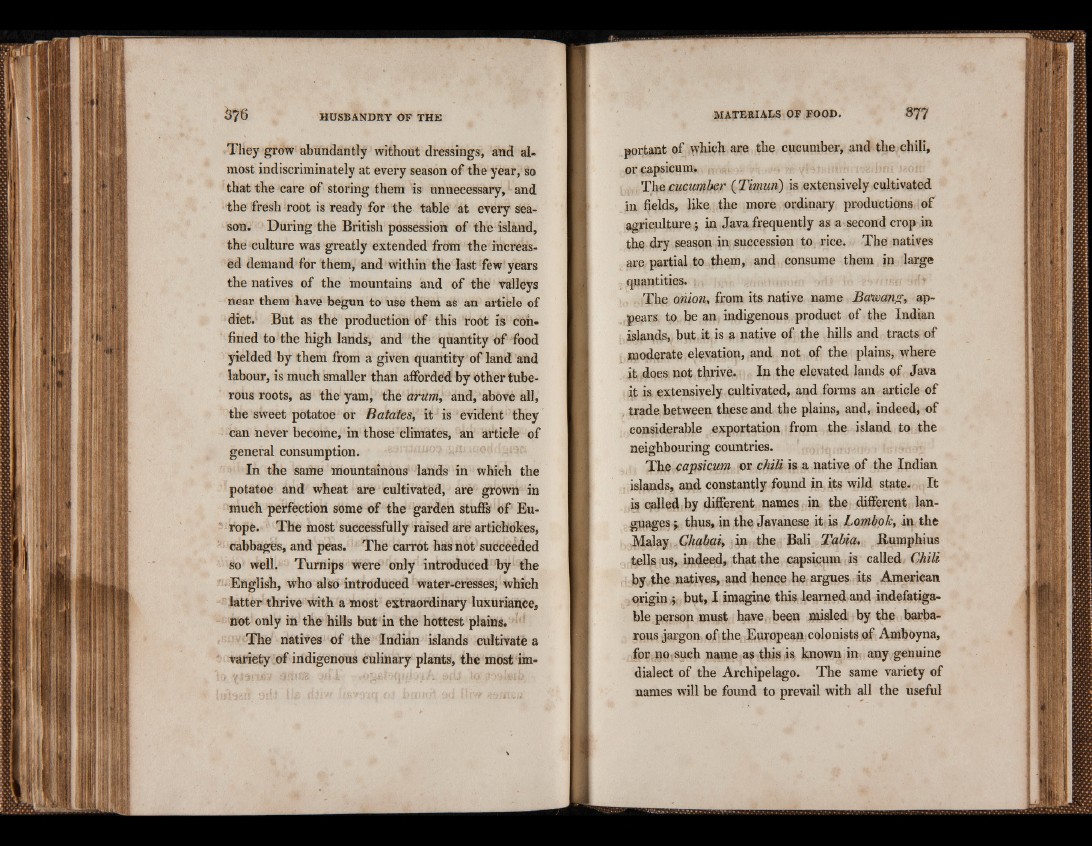
They grow abundantly without dressings, and almost
indiscriminately at every season of the year, so
that the care of storing them is unnecessary,and
the fresh root is ready for the table at every season.
During the British possession of the island,
the culture was greatly extended from the increased
demand for them, and within the last few years
the natives of the mountains and of the valleys
near them have begun to use them as an article of
diet. But as the production of this root is confined
to the high lands, and the quantity of food
yielded by them from a given quantity of land and
labour, is much smaller than afforded by other tuberous
roots, as the yam, the arum, and, above all,
the sweet potatoe or Batates, it is evident they
can never become, in those climates, an article of
general consumption.
In the same mountainous lands in which the
potatoe and wheat are cultivated, are grown in
much perfection some of the garden stuffs of Europe.
The most successfully raised are artichokes,
cabbages, and peas. The carrot has not succeeded
so well. Turnips were only introduced by the
English, who also introduced water-cresses, which
latter thrive with a most extraordinary luxuriance,
not only in the hills but in the hottest plains.
The natives of the Indian islands cultivate a
variety of indigenous culinary plants, the most important
of which are the cucumber, and the chili,
or capsicum. t
The cucumber ( Timun) is extensively cultivated
in fields, like the more ordinary productions of
agriculture; in Java frequently as a second crop in
the dry season in succession to rice. The natives
are partial to them, and consume them in large
quantities. .
The onion, from its native name Bcmang, appears
to bean indigenous product of the Indian
islands, but it is a native of the hills and tracts of
moderate elevation, and not of the plains, where
it does not thrive. In the elevated lands of Java
it is extensively cultivated, and forms an article of
trade between these and the plains, and, indeed, of
considerable exportation from the island to the
neighbouring countries.
The capsicum or chili is a native of the Indian
islands, and constantly found in its wild state. It
is called by different names in the different languages;.
thus, in the Javanese it is Lombok, in the
Malay Chabai, in the Bali Tabia. Rumphius
tells us, indeed, that the capsicum is called Chili
by the natives, and hence he argues its American
origin ; but, I imagine this learned and indefatigable
person must have been misled by the barbarous
jargon of the European colonists of Amboyna,
for no, such name as this is known in any genuine
dialect of the Archipelago. The same variety of
names will be found to prevail with all the useful